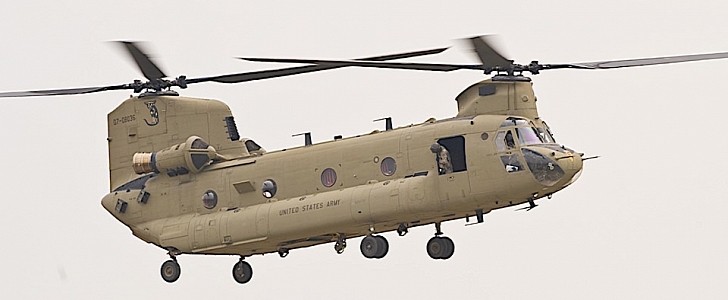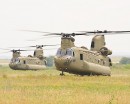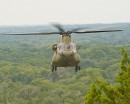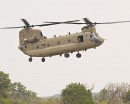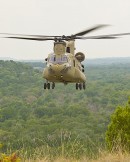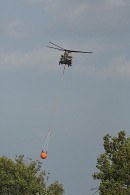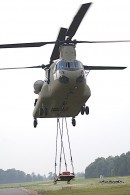In 1962, Boeing introduced the CH-47 Chinook, that funky-looking, tandem-rotor heavy lift machine we are so used to see flying over the battlefields of America’s wars. It’s quite an old breed of helicopters, but one the American military is not planning of retiring anytime soon.
Throughout its life, the Chinook suffered many changes, but it pretty much stayed true to the engine family that powered it ever since conception. T55 is how the family is called; it was made first by Lycoming and presently by Honeywell Aerospace.
At the beginning of this week, Honeywell said it was awarded by the U.S. Army a $476 million contract to keep supplying new and spare T55 engines until 2024. The company will also have to provide the control units for these powerplants.
“Supporting the U.S. Army Chinook Program is a bedrock principle for Honeywell Aerospace,” said in a statement Steven Williams, vice president of Defense Aftermarket, Honeywell Aerospace. “Our mission is manufacturing, maintaining, and modernizing T55 engines for the critical heavy-lift mission, and we take this mission seriously. We are very proud to continue our strong relationship with PEO Aviation, the U.S. Army and our warfighter.”
The T55 engine first appeared before the Chinook came onto the scene in 1955. In its early incarnations, it developed 1,600 shaft horsepower, but that increased with every version.
The engines Honeywell is tapped to keep making are of the T55-GA-714A variety. They are capable of developing 4,800 shaft horsepower (22 percent more power than the preceding version, while using seven percent less fuel) and can take the Chinook to top speeds of 196 mph (315 kph).
Since its introduction, over 6,000 T55 were made, flying for a combined 12 million hours. In the ongoing war in Afghanistan, this particular helicopter has the most recorded crashes to its name, including from hostile fire, more than the UH-60 Black Hawk and AH-64 Apache.
At the beginning of this week, Honeywell said it was awarded by the U.S. Army a $476 million contract to keep supplying new and spare T55 engines until 2024. The company will also have to provide the control units for these powerplants.
“Supporting the U.S. Army Chinook Program is a bedrock principle for Honeywell Aerospace,” said in a statement Steven Williams, vice president of Defense Aftermarket, Honeywell Aerospace. “Our mission is manufacturing, maintaining, and modernizing T55 engines for the critical heavy-lift mission, and we take this mission seriously. We are very proud to continue our strong relationship with PEO Aviation, the U.S. Army and our warfighter.”
The T55 engine first appeared before the Chinook came onto the scene in 1955. In its early incarnations, it developed 1,600 shaft horsepower, but that increased with every version.
The engines Honeywell is tapped to keep making are of the T55-GA-714A variety. They are capable of developing 4,800 shaft horsepower (22 percent more power than the preceding version, while using seven percent less fuel) and can take the Chinook to top speeds of 196 mph (315 kph).
Since its introduction, over 6,000 T55 were made, flying for a combined 12 million hours. In the ongoing war in Afghanistan, this particular helicopter has the most recorded crashes to its name, including from hostile fire, more than the UH-60 Black Hawk and AH-64 Apache.
